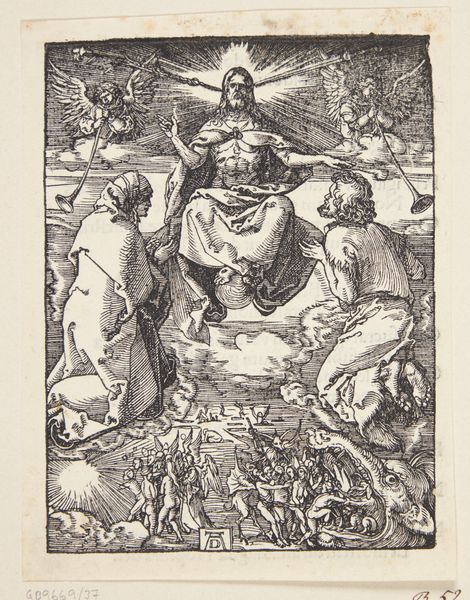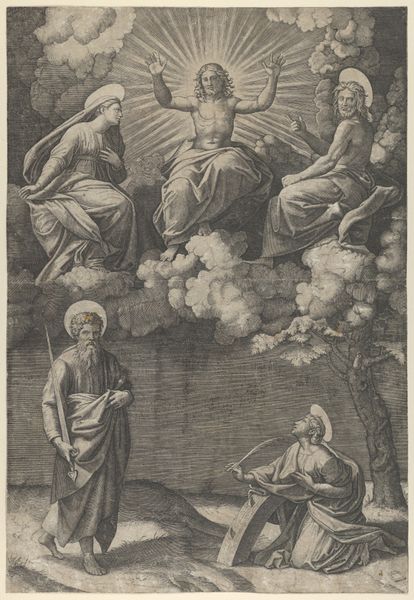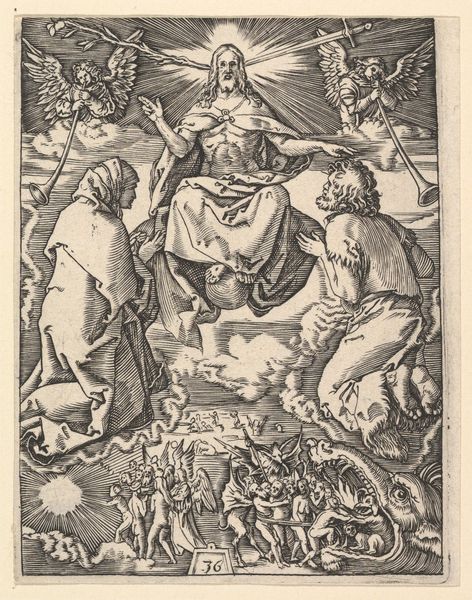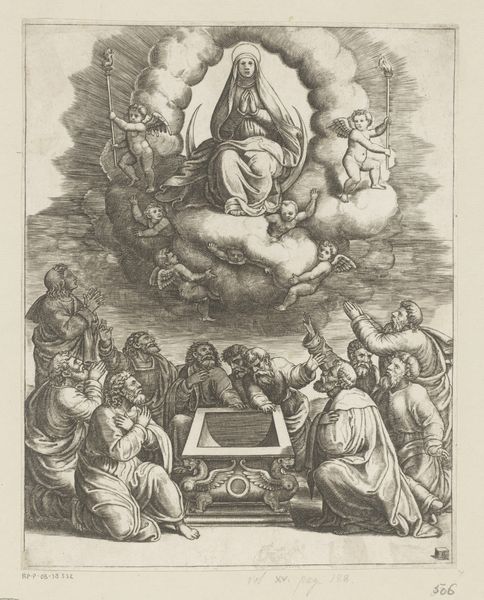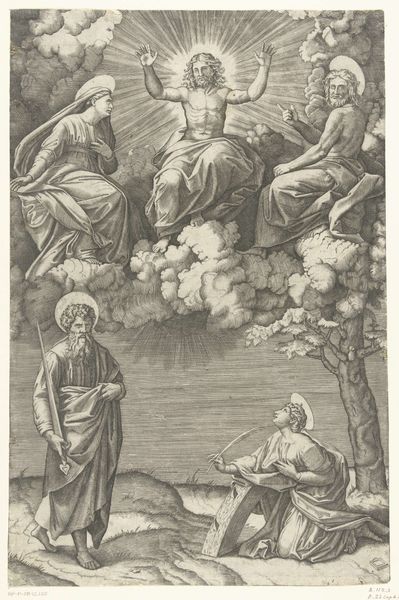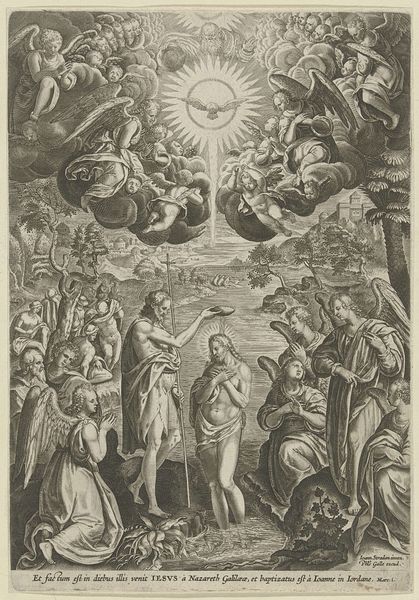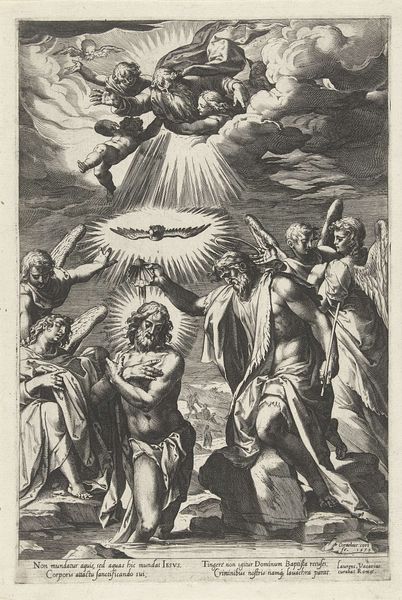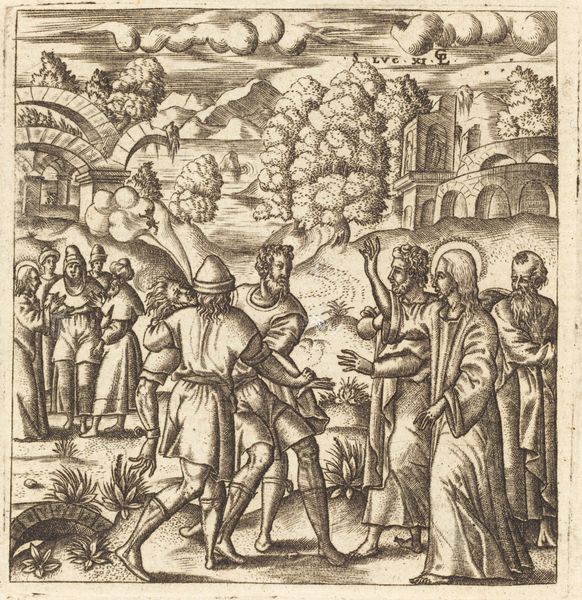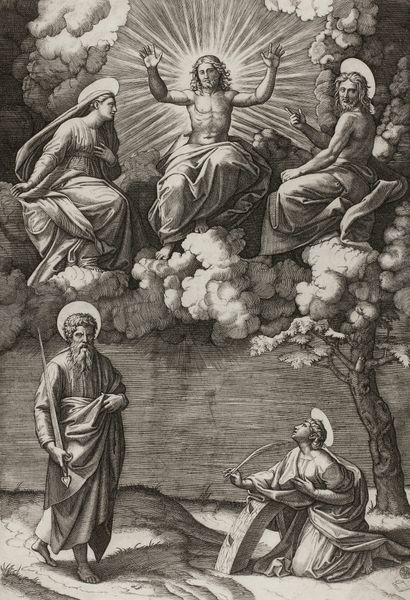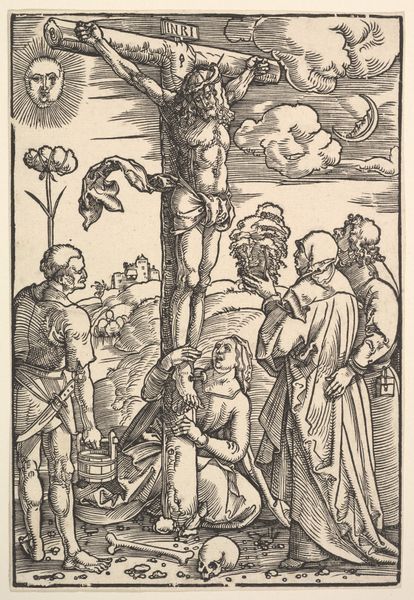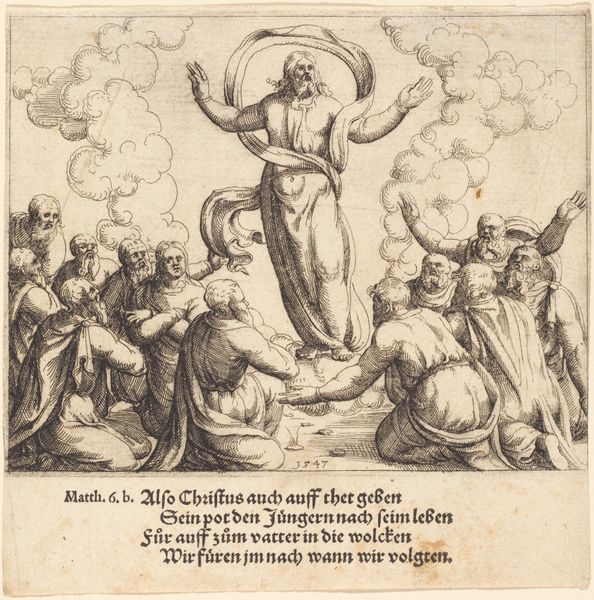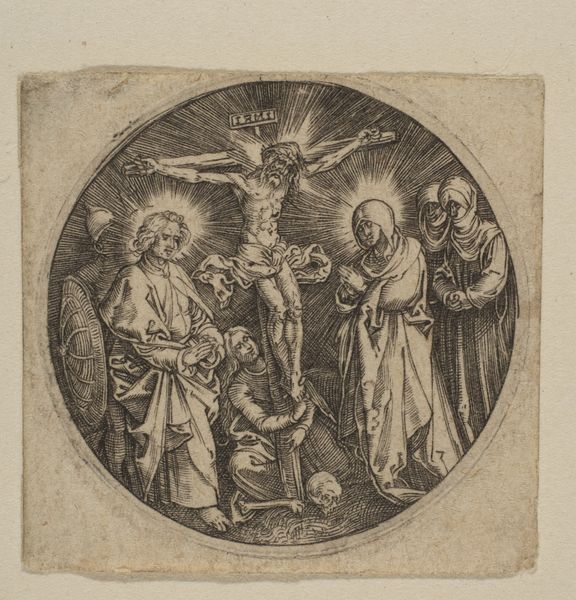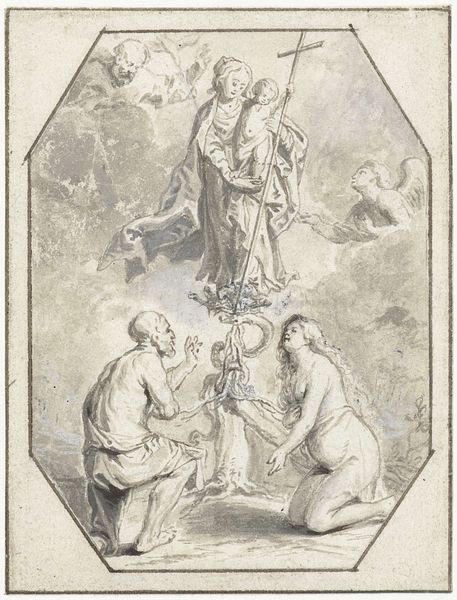
print, engraving
#
pen drawing
# print
#
figuration
#
line
#
history-painting
#
italian-renaissance
#
engraving
Copyright: National Gallery of Art: CC0 1.0
Léonard Gaultier made "The Transfiguration" with engraving, a printmaking technique. Lines are incised into a metal plate, then filled with ink and transferred to paper under pressure. Look closely, and you’ll see that the richness of tone comes entirely from the density and direction of those lines. The engraver's skill is evident in the control they have over the burin, the tool used to cut the lines. This was highly skilled work, requiring years of training. Engraving was a key technology for disseminating images across Europe. Prints like this one allowed religious stories to reach a wide audience, playing a role in the Reformation and Counter-Reformation. They were relatively affordable, but also involved a considerable amount of labor and skill. Thinking about the process of engraving helps us appreciate the artistry involved, and also the social context in which these images circulated. It challenges the idea that art is only about individual genius, highlighting the importance of skilled craftsmanship and mass communication.
Comments
No comments
Be the first to comment and join the conversation on the ultimate creative platform.
